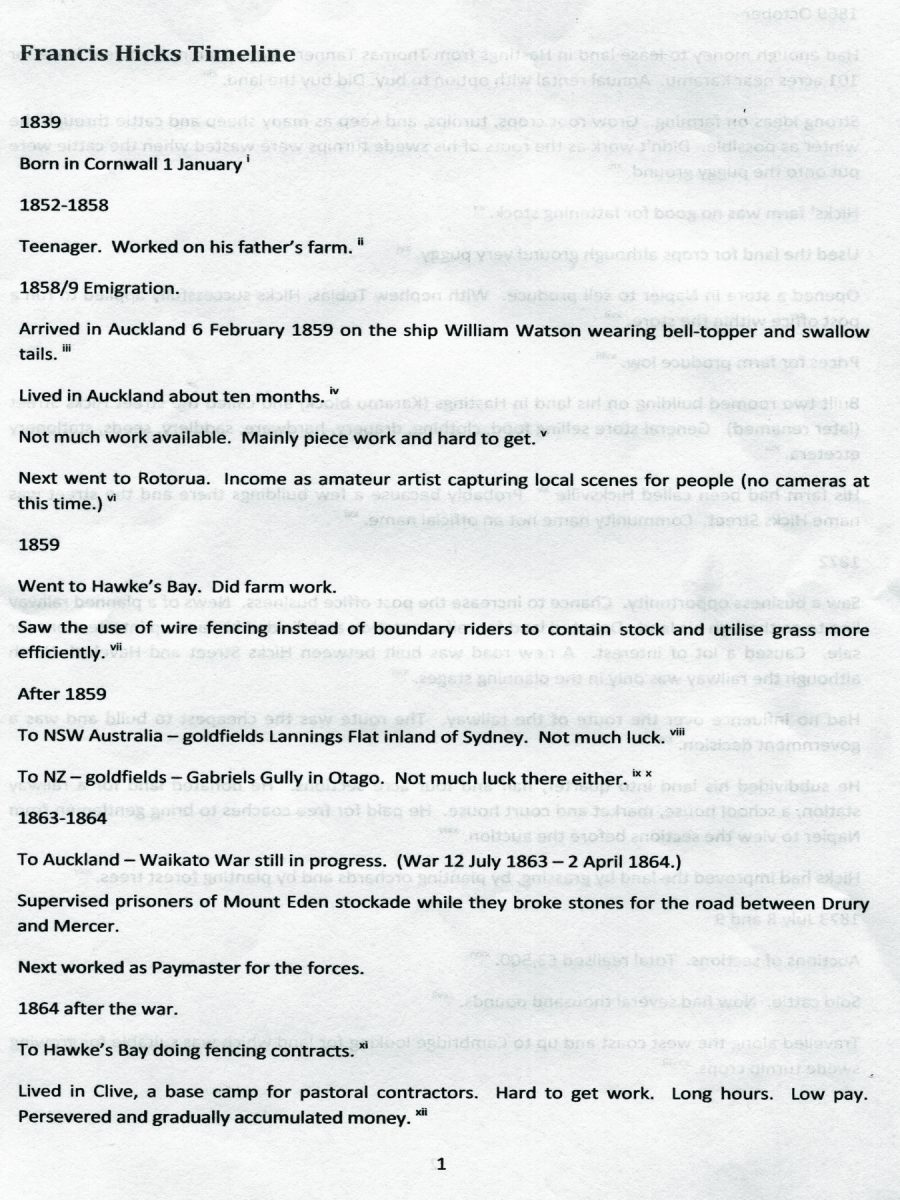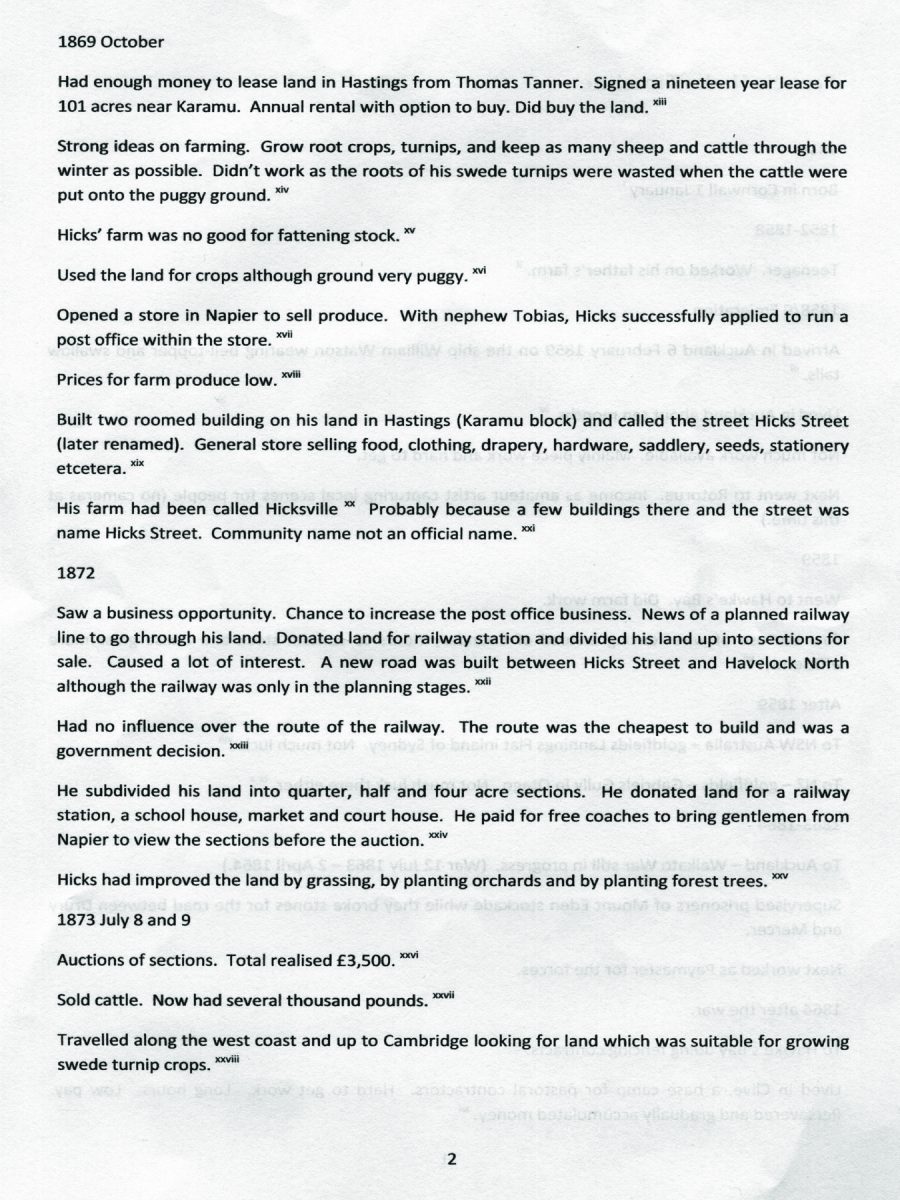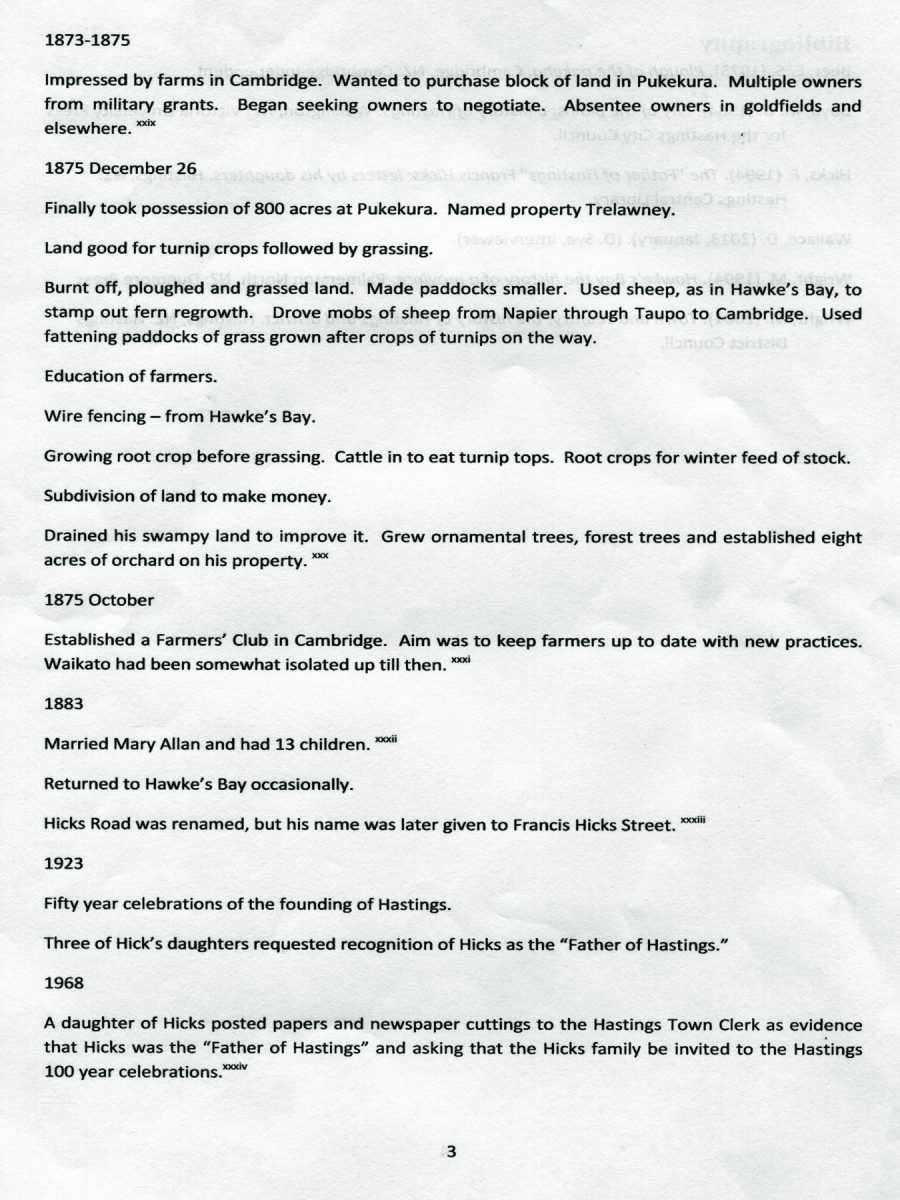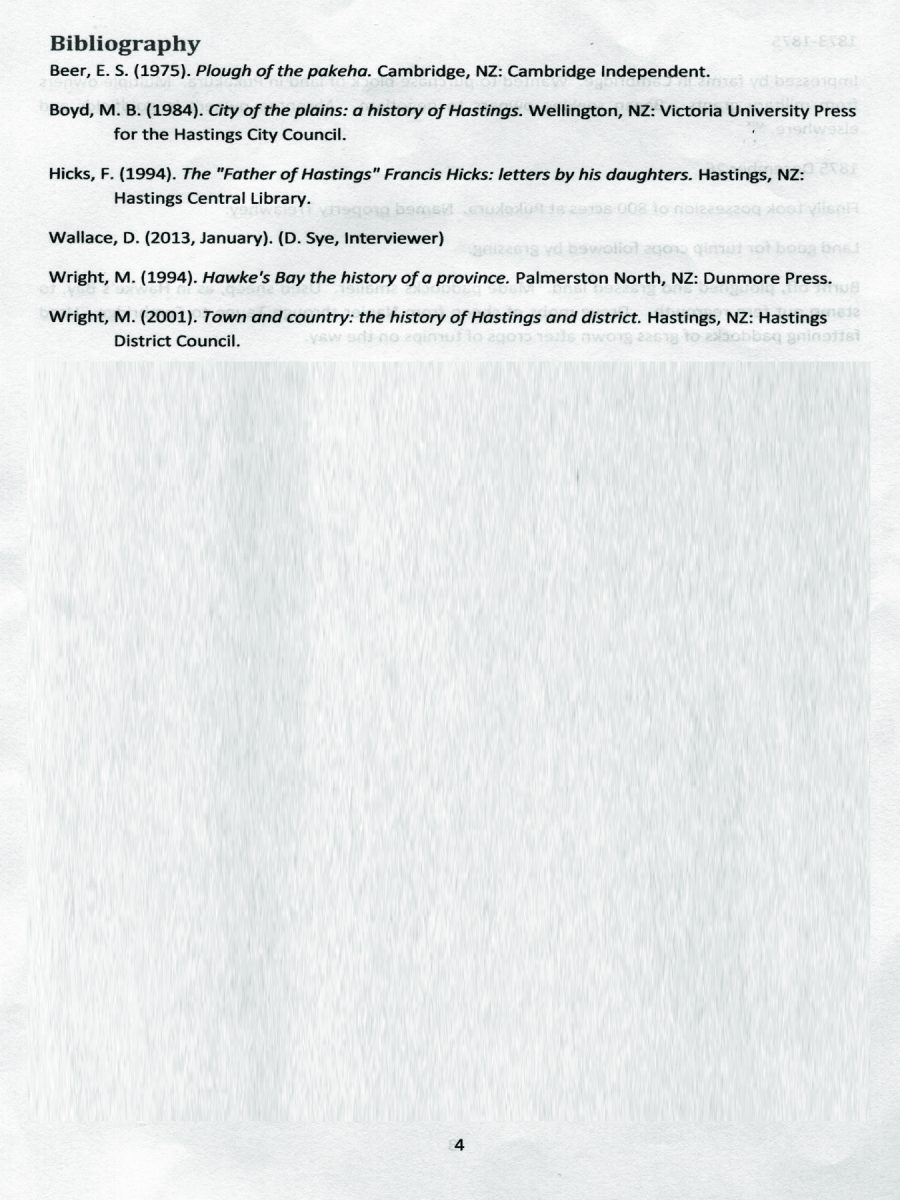Page 2
1869 October
Had enough money to lease land in Hastings from Thomas Tanner. Signed a nineteen year lease for 101 acres near Karamu. Annual rental with option to buy. Did buy the land. xiii
Strong ideas on farming. Grow root crops, turnips, and keep as many sheep and cattle through the winter as possible. Didn’t work as the roots of his swede turnips were wasted when the cattle were put onto the puggy ground. xiv
Hicks’ farm was no good for fattening stock. xv
Used the land for crops although ground very puggy. xvi
Opened a store in Napier to sell produce. With nephew Tobias, Hicks successfully applied to run a post office within the store. xvii
Prices for farm produce low. xviii
Built two roomed building on his land in Hastings (Karamu block) and called the street Hicks Street (later renamed).
General store selling food, clothing, drapery, hardware, saddlery, seeds, stationery etcetera. xix
His farm had been called Hicksville xx Probably because a few buildings there and the street was named Hicks Street. Community name not an official name. xxi
1872
Saw a business opportunity. Chance to increase the post office business. News of a planned railway line to go through his land. Donated land for railway station and divided his land up into sections for sale. Caused a lot of interest. A new road was built between Hicks Street and Havelock North although the railway was only in the planning stages. xxii
Had no influence over the route of the railway. The route was the cheapest to build and was a government decision. xxiii
He subdivided his land into quarter, half and four acre sections. He donated land for a railway station, a school house, market and court house. He paid for free coaches to bring gentlemen from Napier to view the sections before the auction. xxiv
Hicks had improved the land by grassing, by planting orchards and by planting forest trees. xxv
1873 July 8 and 9
Auctions of sections. Total realised £3,500. xxvi
Sold cattle. Now had several thousand pounds. xxvii
Travelled along the west coast and up to Cambridge looking for land which was suitable for growing swede turnip crops. xxviii
















Do you know something about this record?
Please note we cannot verify the accuracy of any information posted by the community.